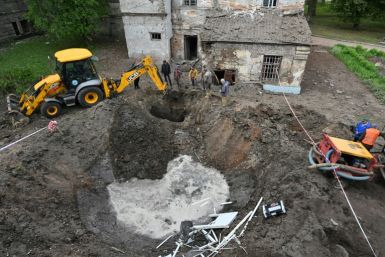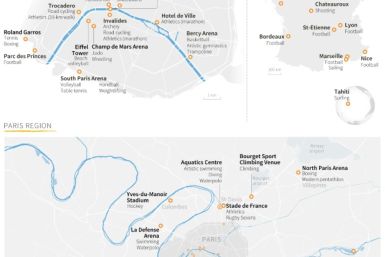ATSB Reports on Unknown Flying Object Near Collision With Aircraft in Perth
The Australian Transport Safety Bureau released a completed summary report on an unknown flying object in near collision with an aircraft.
The near collision happened on March 19, 2014, at about 0913 Western Standard Time (WST) between an unknown flying object and an aircraft identified as De Havilland DHC-8.
The aircraft was approaching Perth Airport from Kambalda, Western Australia, when the crew spotted a bright strobe light flying directly towards the direction of the plane.
The strobe light was approximately coming from 3,800 feet above mean sea level, ATSB wrote.
The pilot immediately took an evasive action, turning towards the west direction, avoiding a collision with the object. The unknown object continued to pass at about 20 metres horizontally and 100 feet vertically from the plane.
The pilot describe the unknown object to be cylindrical in shape and grey in colour, about 3,700 feet AMSL and has overall controlled airspace. The crew said that it did not receive any traffic collision avoidance system (TCAS) alert.
The unknown flying object was first assumed as unmanned aerial vehicle (UAV) as 3,500 below feet AMSL was Australian Defence Force's military restricted airspace.
However, ADF, confirmed that it was not conducting UAV's operation at the time and was not aware of any related activities at the time of the near collision.
ATSB was not able to confirm and identify any UAV operator in the nearby area.
The summary report is part of ATSB's Aviation Short Investigation Bulletin consisting of short investigations on incidents that can highlight valuable safety lessons for pilots, operators and safety managers. The bulletin is released periodically with reports based on supplied information from organisations and individuals.
In this case, ATSB advised against UAV's, including those recreational drone flyers that pose great threats to aircraft.
ATSB spokesman Stuart Godley told ABC says that it has investigated two other incidents of UAVs operating near airports.
"There was also one at Newcastle, three days after the incident at Perth and that was a suspected UAV almost colliding with a helicopter. Apart from that, we've seen one in Port Macquarie where a UAV was operating in the vicinity of the aerodrome without doing any radio calls but apart from those two we haven't had any other incidents reported to us."
The spokesman for the Civil Aviation Safety, Peter Gibson, called for owners to follow the very simple rules of flying UAV's.
"Stay under 400 feet, stay 5 kilometres away from an airport, so that keeps you away from any aircraft that might be flying, planes or helicopters, staying more than 30 metres away from people or property keeps a safe buffer distance from people who could get injured from your machine, and always keep your machine in line of sight so you can see where it is, keep it under control at all times," he said.
Those who will not abide by these rules shall be fine from $800 to $8,000 and if someone is injured, prosecution shall proceed.






